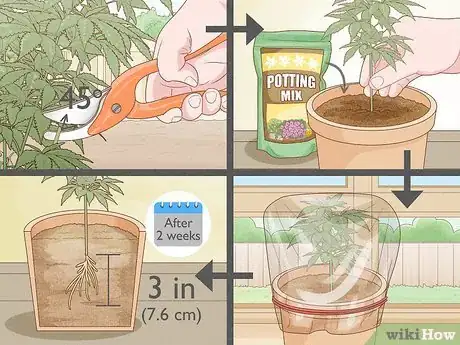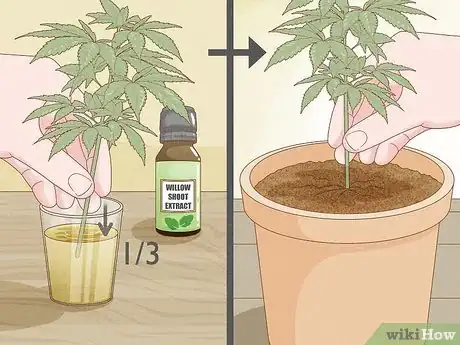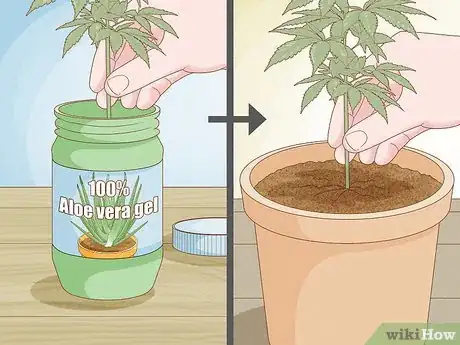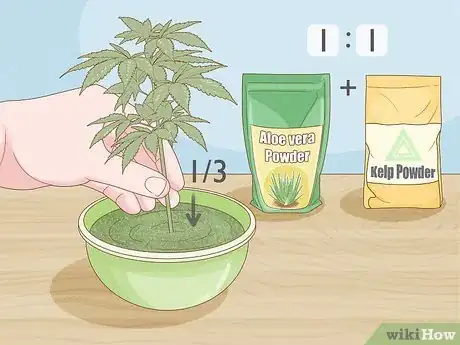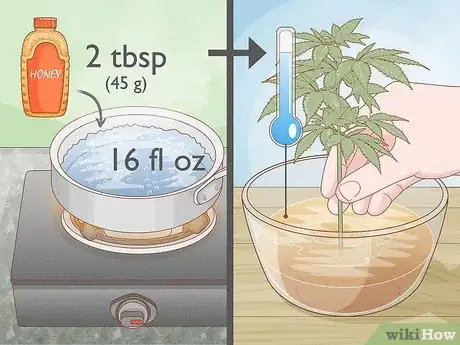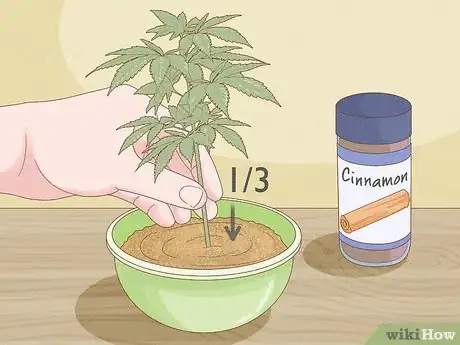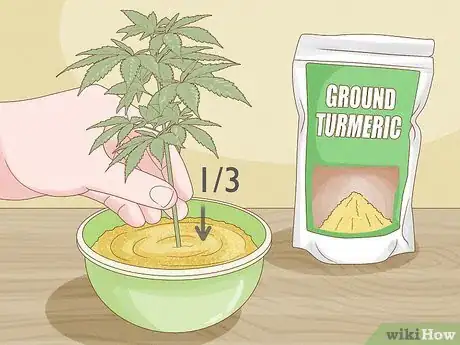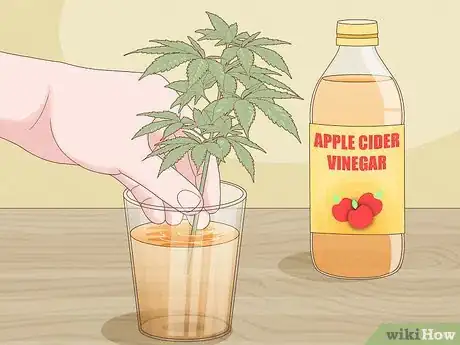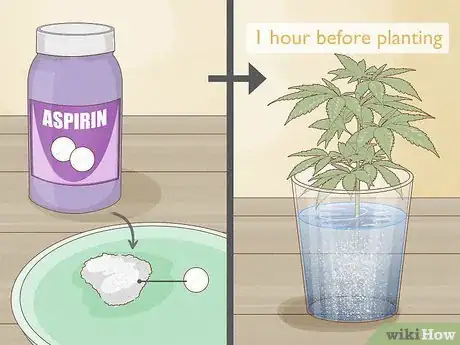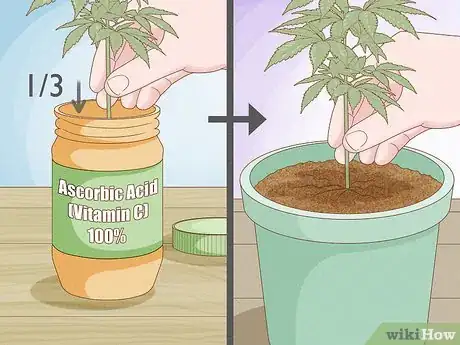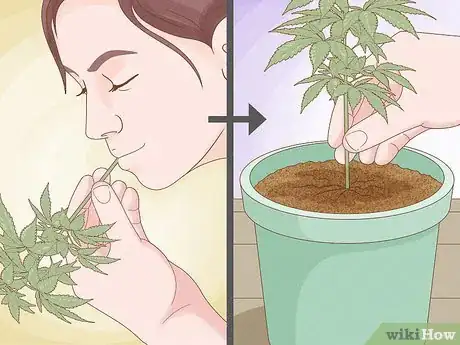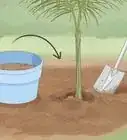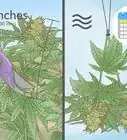This article was co-authored by wikiHow staff writer, Christopher M. Osborne, PhD. Christopher Osborne has been a wikiHow Content Creator since 2015. He is also a historian who holds a PhD from The University of Notre Dame and has taught at universities in and around Pittsburgh, PA. His scholarly publications and presentations focus on his research interests in early American history, but Chris also enjoys the challenges and rewards of writing wikiHow articles on a wide range of subjects.
There are 14 references cited in this article, which can be found at the bottom of the page.
This article has been viewed 19,034 times.
Learn more...
If you prefer organic cultivation, have concerns about “synthetic” products, or are just running low on your rooting hormone supply, you’re probably wondering if you can successfully clone a marijuana plant without any synthetic rooting hormone. The honest but unsatisfying answer is ... maybe! It’s true that rooting hormones are proven to work while most natural alternatives have very limited supporting evidence, but the alternatives are generally very affordable and safe to try.[1] X Research source So check out the list below before your next marijuana cloning effort.
Steps
No rooting hormone replacement
-
Marijuana cuttings can be cloned without a root boost. The operative word here is “can,” though, because your odds of success are definitely lower than if you do use a synthetic rooting hormone.[2] X Research source To try out this method, follow the usual steps for cloning a plant, minus the rooting hormone:
- Cut a healthy-looking lateral stem—not the main (terminal) stem—from the plant. Make the cut at a 45-degree angle and remove any leaves or stems from the bottom 1/2 of the cutting.
- Stick the bottom 1/3 of the cutting straight down into a pot containing a moist growing medium. Standard potting soil will work, but many growers prefer rockwool (fibrous cubes) or rooting plugs (also called “peat pellets”).
- Cover the pot and cutting with plastic or glass and keep it in a warm location that gets partial but not direct light. Keep the soil evenly moist by misting it as needed.
- Transplant the clone after about 2 weeks, by which time its roots should be about 3 in (7.6 cm) long. Treat it as a normal adult plant from this point on.
Willow shoot extract
-
This natural alternative has some proof of effectiveness. Unlike many synthetic rooting hormone alternatives, willow shoot extract has been studied and appears to be at least somewhat beneficial to root growth. To use it, dip the bottom 1/3 of your cutting into the willow extract liquid or gel before sticking it into your growing medium.[3] X Research source
- To avoid potentially contaminating your container of willow shoot extract, pour a small amount into a little container (like a shot glass) and dip your cutting into that.
- Powdered willow extracts are also available. In this case, dip the bottom 1/3 of the cutting into the powder until it’s lightly coated.
- Willow extract can be purchased online for around $15-$30 USD.
- Here’s the bad news: when studied side-by-side, synthetic rooting hormone was at least twice as effective as willow shoot extract.[4] X Research source
Aloe gel
-
Aloe has shown some promise with other plant types. To give it a try, either cut open a fresh aloe leaf or use a packaged gel. Dip the bottom 1/3 of your cutting into the gel until it is lightly coated, then plant it as normal.
- If you’re not using fresh aloe, make sure to buy 100% aloe vera gel, which is widely available.
- No scientific studies have tested aloe’s effectiveness as a root stimulant for marijuana plants, and the results with other plant types aren’t all that great—the evidence ranges from promising[5] X Research source to barely encouraging.[6] X Research source
Aloe and kelp
-
This combo might be superior to aloe alone. Get started by mixing together equal parts of aloe and kelp powders, or stir together aloe gel and liquid kelp. Dip the bottom 1/3 of your cutting into the mixture before planting it.[7] X Research source
- If you’re using rockwool or a rooting plug as a growing medium, you can instead soak the rockwool or plug for 30 minutes in a mixture of water and a spoonful each of aloe and kelp.
- Shop online for powdered aloe and kelp, or for aloe gel and liquid kelp.
Honey
-
Honey may naturally help to prevent root rot. This is due to its natural antibacterial and antifungal properties. Try it out by stirring 2 tbsp (45 g) of honey in 16 fl oz (470 ml) of boiling water. Let the mixture cool, then dip the bottom 1/3 of your cutting into it before planting.[8] X Research source
- Like many of the alternatives here, honey hasn’t been tested specifically with marijuana cuttings. But it commonly shows up in marijuana growers’ forums as an alternative to synthetic rooting hormones.
- You may also want to try using undiluted honey. Just dip your cutting into the honey and give it a light coating.
Cinnamon
-
Cinnamon has antibacterial properties like honey. Also like honey, it’s a cheap option to try out! Simply dip the bottom third of a fresh marijuana cutting into ground cinnamon until it’s lightly dusted, then stick it in your chosen growing medium.
- The anecdotal evidence for using cinnamon is based on experiments with succulents (plants like aloe and agave), not marijuana, so definitely take it with an extra grain of salt.[9] X Research source
- There’s no evidence that using fresh-ground cinnamon is more effective than packaged cinnamon powder, but that’s another option you can consider.
Turmeric
-
Like cinnamon, it’s a “wonder spice” that might help. Try dipping the bottom third of your cutting in ground turmeric, or combine the turmeric with another potential alternative like honey or aloe. Here again, turmeric has antibacterial and antifungal properties that may protect new root growth, but there’s no strong evidence that it actually promotes root development.[10] X Research source
- Turmeric is easy to find in the grocery store along with other spices.
Apple cider vinegar
-
This is another pantry staple with antibacterial properties. Apple cider vinegar is good for a lot of things, and it may be worth a try as a rooting hormone alternative. Try it out in the typical fashion, dipping the bottom of your fresh marijuana cutting into it right before planting it.
- While it’s nice to think that vinegar from your pantry will do the job, there’s really only one type of vinegar that has legit supporting evidence as a root stimulant—wood vinegar. Unfortunately, wood vinegar is a byproduct of charcoal production that isn’t widely available as a commercial product.[11] X Research source
Aspirin
-
Aspirin has some similarities to acids produced by plants. Some gardeners swear by using crushed aspirin as a rooting hormone alternative, so it’s possible it’ll work with marijuana plants.[12] X Research source Others are quick to point out the lack of clear evidence, however.[13] X Research source If you want to give it a go, crush a single aspirin tablet, stir it into a glass of water, and soak your cutting in it for 1 hour before planting.
- Aspirin is acetylsalicylic acid, which is similar to (but not the same as) the salicylic acids that plants produce naturally.
Vitamin C
-
It seems to help with tomatoes and might help here. There is some evidence that ascorbic acid (Vitamin C) might spur root development in tomato plant cuttings, so it’s at least possible that those results will translate to marijuana plants.[14] X Research source To try out ascorbic acid, dip the bottom 1/ 3 of your cutting into Vitamin C powder, or into water with the powder dissolved in it.
- Look for 100% Vitamin C powder at health and wellness retailers.
- Some growers call Vitamin C a “garden myth” as a root stimulant (along with aloe, cinnamon, and so on).[15] X Research source It’s really up to you whether you want to give them a try.
Saliva
-
Yes, it sounds weird, but some people say it works! The process here is very straightforward: stick the end of the cutting into your mouth and moisten it with your spit before planting it.[16] X Research source You may even want to very lightly chew on the cutting to help the saliva permeate it.
- While there’s no evidence that human saliva works as a root stimulant, animal saliva does seem to aid in plant growth in the wild.[17] X Research source
- In case you’re wondering: supporters of using human saliva don’t mention any psychotropic effects from briefly sucking on marijuana cuttings.
You Might Also Like

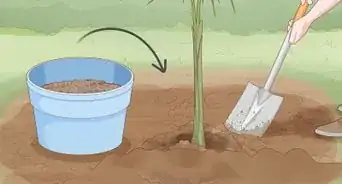
 Can LED Lights Grow Plants? Regular LED Lights vs. Grow Lights
Can LED Lights Grow Plants? Regular LED Lights vs. Grow Lights

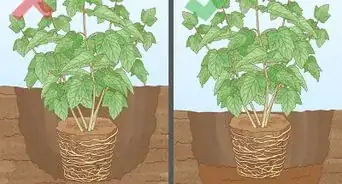




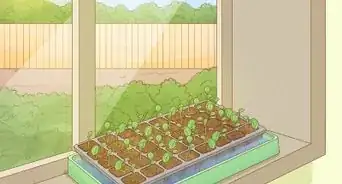
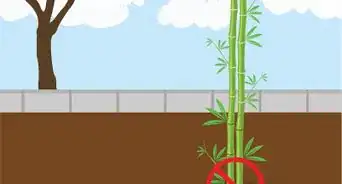
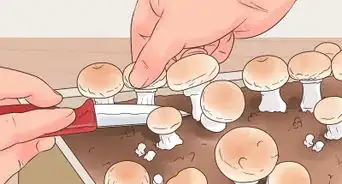
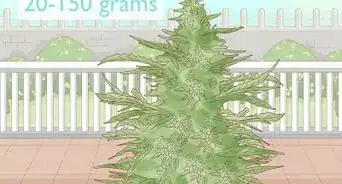 A Complete Guide to Growing Autoflowers Outdoors (When to Plant, How Often to Water, & How Much They Yield)
A Complete Guide to Growing Autoflowers Outdoors (When to Plant, How Often to Water, & How Much They Yield)
References
- ↑ https://cdnsciencepub.com/doi/full/10.1139/cjps-2018-0038
- ↑ https://cdnsciencepub.com/doi/full/10.1139/cjps-2018-0038
- ↑ https://cdnsciencepub.com/doi/full/10.1139/cjps-2018-0038
- ↑ https://cdnsciencepub.com/doi/full/10.1139/cjps-2018-0038
- ↑ https://www.scielo.sa.cr/scielo.php?script=sci_abstract&pid=S0377-94242020000100065&lng=en&nrm=iso
- ↑ https://www.researchgate.net/publication/350994926_Effect_of_Aloe_vera_Gel_for_Inducing_Rooting_of_Stem_Cuttings_and_Air_layering_of_Plants
- ↑ https://www.redbudsoilcompany.com/blogs/the-redbud-blog/how-to-clone-cannabis-plants-using-aloe-vera-kelp
- ↑ https://www.ctahr.hawaii.edu/uhmg/news/V21-honey-rooting-Firth.pdf
- ↑ https://www.sublimesucculents.com/propagation-experiment-rooting-aid-effective/
- ↑ https://punemirror.indiatimes.com/entertainment/unwind/rooting-for-hormones/articleshow/73912523.cms
- ↑ https://gardenologist.org/lets-smash-some-gardening-myths/
- ↑ https://www.dailylocal.com/2008/03/06/aspirin-can-help-the-rooting-process/
- ↑ https://laidbackgardener.blog/2020/10/14/garden-myth-aspirin-as-rooting-hormone/
- ↑ https://link.springer.com/article/10.1007/s10725-005-5991-3
- ↑ https://www.gardenmyths.com/best-rooting-hormones/
- ↑ https://www.dirtdoctor.com/garden/Rooting-cuttings-Just-add-saliva_vq11811.htm
- ↑ https://onlinelibrary.wiley.com/doi/abs/10.1111/gfs.12016
About This Article

